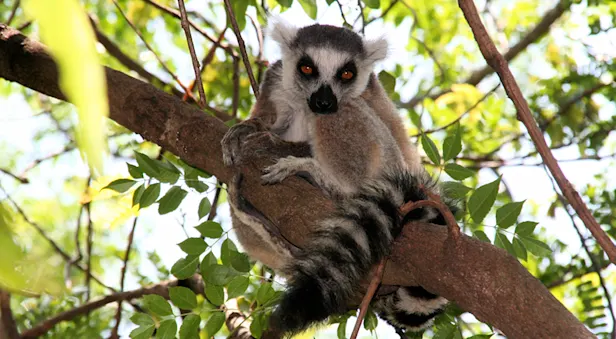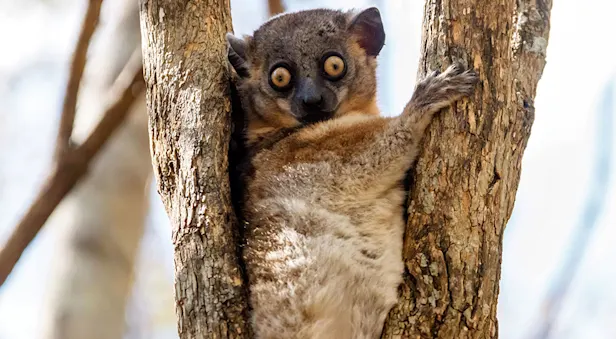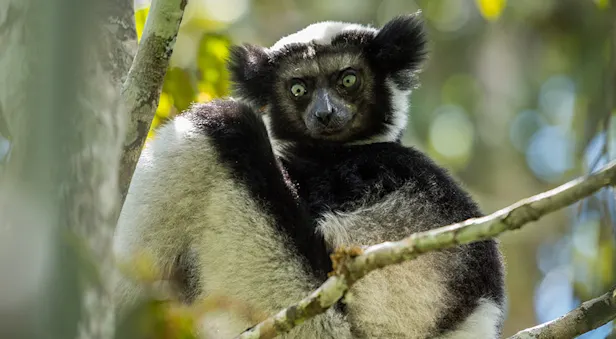Lemur Facts | Madagascar Wildlife Guide
Lemurs are found only in Madagascar and the north-adjacent Comoro Islands. It is theorized that these small primates traveled to Madagascar from the African mainland millions of years ago on floating rafts of vegetation. Since their arrival, they have evolved into the diverse number of species we see today.
Lemurs are prosimians, a group of primitive primates that includes lemurs, lorises, tarsiers and bush babies. Unlike humans, monkeys and apes, they have characteristics similar to early ancestral primates. They are generally arboreal and gregarious, living in family groups or troops in the trees.
Lemurs display a range of affiliative behaviors, including playing, sniffing, huddling and grooming. They have specially adapted lower incisors that jut forward to form a “toothcomb,” as well as a grooming claw on the second toe of the hind foot.
Unlike many primates, lemurs have an exceptional sense of smell, and some species have evolved with long noses, similar to those of dogs. Smelling and scents play an important role within lemur society as methods of communication, information-gathering and marking territory. Lemurs have binocular vision, allowing them to experience a wider visual field, but they still turn their heads because their large eyes have limited movement in each socket. The creature’s wide-eyed stare, nocturnal activities and haunting cries have inspired legends in some Malagasy communities that lemurs are souls of the departed—“lemur” is derived from the Latin word lemures, meaning ghosts or specters.
Lemur diversity is great on Madagascar, where there are 53 varieties (at least 16 others known to have become extinct since human arrival). The smallest living variety is the pygmy mouse lemur and the largest is the indri. However, one of the extinct species was larger than a gorilla and weighed up to 450 pounds. All in all, Madagascar holds more than one-third of the world’s primate families due to its lemur population. Lemurs are endangered, and their primary threat is deforestation due to agriculture, ranching and human encroachment. As forests are cut down, these fascinating primitive primates risk extinction.
Photo Credit: Denise Ramsey




































